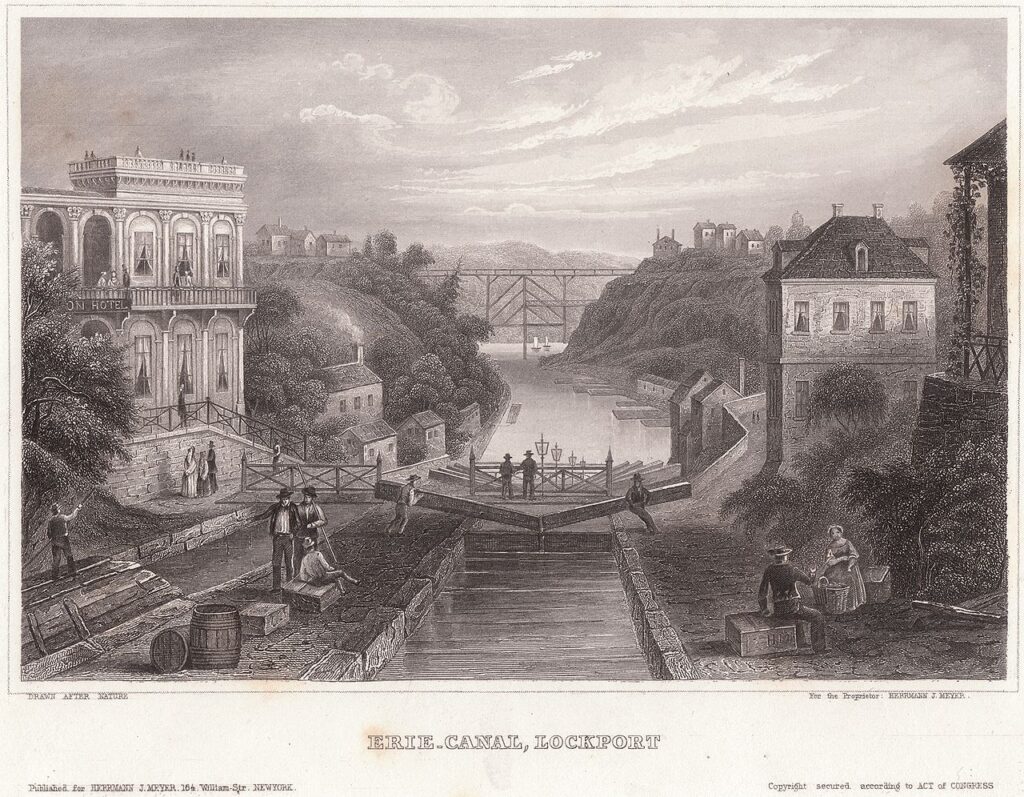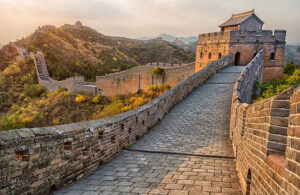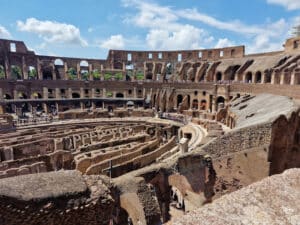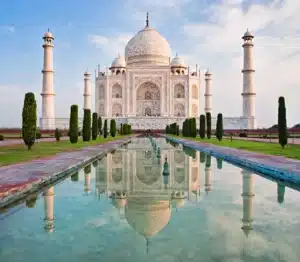

Civil engineering has been at the forefront of human progress, shaping the world we live in through ingenious designs and groundbreaking innovations. Throughout history, engineers have left an indelible mark on the landscape, creating structures that stand as testaments to human ingenuity. In this blog, we embark on a captivating journey through time to explore some of the most remarkable historical civil engineering marvels that have stood the test of time.

1. The Great Wall of China: Defending Ancient Frontiers
The Great Wall of China, an architectural marvel of ancient times, showcases remarkable engineering brilliance in its construction. Comprising a mix of materials such as earth, wood, bricks, and stone, the wall spans thousands of miles, adapting to diverse terrains with elevated sections constructed through extensive terraforming. In areas lacking natural defenses, tamped earth was utilized, while bricks and stones were employed in more accessible regions. The strategic placement of the wall followed the natural contours of the landscape, taking advantage of geographical features like hills and mountains to enhance its defensive capabilities. Watchtowers were strategically positioned to provide optimal visibility and communication.
The primary purpose of the Great Wall was military defense, guarding against invasions from nomadic groups and military incursions from the north. Garrison stations housed soldiers ready to respond swiftly to potential threats. Watchtowers played a crucial role in surveillance and communication, utilizing smoke signals and beacon fires. Gates and passes controlled by military forces regulated trade and movement while maintaining security. Some sections featured trapdoors, secret passages, and defensive mechanisms to impede invaders.
The construction process involved a massive labor force, including soldiers, peasants, and prisoners, with millions contributing over the centuries. Innovative building techniques, such as sledges, cranes, and hoists, were employed to transport heavy materials, showcasing advanced engineering knowledge. Despite being constructed over different dynasties, the wall exhibits a cohesive design, utilizing standard measurements and building techniques for continuity and efficiency.
In conclusion, the Great Wall of China stands as a testament to the ingenuity, determination, and strategic planning of ancient Chinese civilizations. Its construction, spanning centuries and adapting to diverse terrains, symbolizes China’s historical resilience and commitment to defense, making it an enduring architectural and cultural icon.

2. The Roman Colosseum: Icon of Architectural Innovation
The Roman Colosseum, an enduring symbol of architectural brilliance, stands out as a remarkable structure that has captivated the world for centuries. Constructed between AD 70 and 80, the Colosseum represents a pinnacle of engineering and design during ancient Rome.
Architecturally, the Colosseum utilized innovative materials and construction techniques, notably the use of concrete, allowing for the creation of an elliptical shape that could accommodate up to 80,000 spectators. The incorporation of classical architectural elements, including Doric, Ionic, and Corinthian columns, adorned the facade, contributing to the grandeur of the amphitheater.
Engineering principles played a crucial role in the Colosseum’s design. The hypogeum, an elaborate system of tunnels and chambers beneath the arena, allowed for the storage of animals and equipment, enabling rapid transformations of the arena floor. The retractable awning known as the velarium showcased the Romans’ engineering prowess, providing shade for spectators in the massive seating area. The complex system of entrances and exits demonstrated their understanding of crowd management.
The Colosseum’s multifunctional design allowed it to host diverse events. Primarily designed for gladiatorial combat, the arena also featured spectacles such as wild animal hunts, utilizing the hypogeum for controlled releases. Additionally, the Colosseum could be flooded for mock naval battles, highlighting its versatility for various forms of entertainment.
In conclusion, the Roman Colosseum’s architectural and engineering achievements, from its innovative use of materials to its multifunctional design, showcase the ingenuity of ancient Rome. As a testament to the prowess of its builders, the Colosseum remains an iconic symbol of both grandeur and versatility, reflecting the rich cultural and historical legacy of the ancient world.

3. The Taj Mahal: A Testament to Love and Precision
The Taj Mahal, a sublime testament to love and precision, graces the city of Agra, India, as an architectural and engineering marvel. Commissioned by Emperor Shah Jahan in memory of his beloved wife Mumtaz Mahal, the monument is constructed primarily of pristine white marble sourced from the quarries of Makrana, Rajasthan. The use of high-quality materials and the employment of traditional craftsmanship by skilled artisans and laborers contribute to the Taj Mahal’s grandeur.
The architectural splendor of the Taj Mahal is characterized by perfect symmetry and a meticulously planned layout. The mausoleum’s central dome, flanked by four minarets at each corner, creates a harmonious and balanced design. The intricate design details further enhance its beauty, with the extensive use of pietra dura artwork featuring floral motifs, calligraphy, and geometric patterns, meticulously inlaid with semiprecious stones.
Intricate calligraphy from the Quran adorns the exterior, written in black marble, adding a layer of spiritual significance to the monument. Reflective pools surrounding the Taj Mahal create stunning reflections, while the Charbagh, the meticulously laid-out gardens, contribute to the overall symmetry and aesthetic balance.
Precision in construction techniques is evident in the marble inlay work and carving, where colored stones are carefully placed to create intricate patterns. The central dome, an engineering marvel, utilizes a double-shell design to reduce the load on the supporting structure, ensuring stability and longevity. Optical illusions, such as the slight outward lean of the minarets, add to the monument’s visual impact.
In conclusion, the Taj Mahal’s enduring beauty lies in its meticulous craftsmanship, precise construction techniques, and the seamless integration of architectural and engineering excellence. As a cultural treasure and symbol of eternal love, the Taj Mahal continues to captivate the world with its unparalleled grace and sophistication.

4. The Eiffel Tower: A Steel Giant on the Parisian Skyline
The Eiffel Tower, an enduring symbol of Paris and a masterpiece of engineering innovation, was constructed for the 1889 Exposition Universelle, marking the centennial of the French Revolution. Designed by Gustave Eiffel, the tower’s construction involved the groundbreaking use of wrought iron, with approximately 18,038 meticulously designed and assembled iron parts. The lattice-like structure, created through prefabrication and assembly using over 2 million rivets, not only contributed to its unique aesthetic but also ensured structural stability against wind forces.
Wrought iron, chosen for its strength and malleability, played a pivotal role in the tower’s construction. Gustave Eiffel’s engineering acumen is evident in the tower’s ability to withstand strong winds, with the open lattice design minimizing wind resistance and allowing controlled swaying. The lattice structure, beyond its functional strength, showcased architectural prowess, creating an elegant and distinctive design.
The construction process demonstrated groundbreaking techniques of the time, such as the extensive use of rivets and efficient assembly methods. The riveting process, involving heating the rivets to red-hot temperatures before fastening, ensured a secure and durable connection between iron components. Prefabrication in Eiffel’s factory on the outskirts of Paris facilitated a swift and precise on-site assembly.
Gustave Eiffel’s engineering innovation extended to the tower’s elevators, providing practical access and enhancing its appeal as a tourist attraction. The tower’s architectural and engineering excellence has secured its place not only as an iconic symbol of Paris but also as a lasting testament to the ingenuity of its visionary designer and the advancements in construction techniques of the late 19th century.
As we journey through the archives of history, these civil engineering marvels stand as timeless testaments to the human capacity for innovation and perseverance. Each structure tells a unique story of the challenges faced and overcome, leaving an indelible mark on the world and inspiring generations of engineers to come. The legacy of these historical marvels continues to shape the present and will undoubtedly influence the future of civil engineering for years to come.
